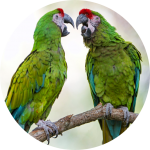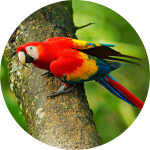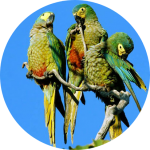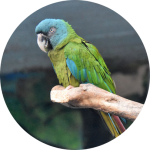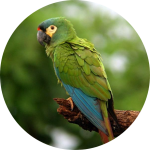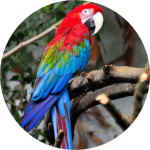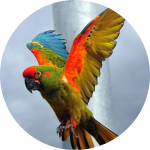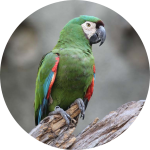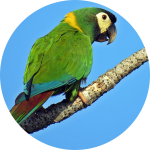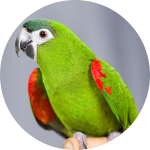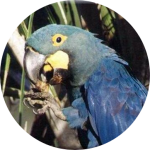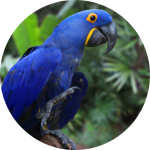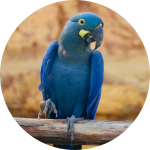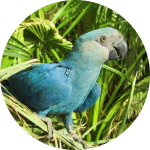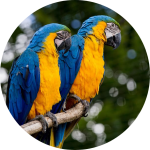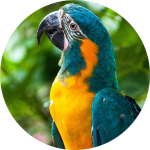MACAW PARROT
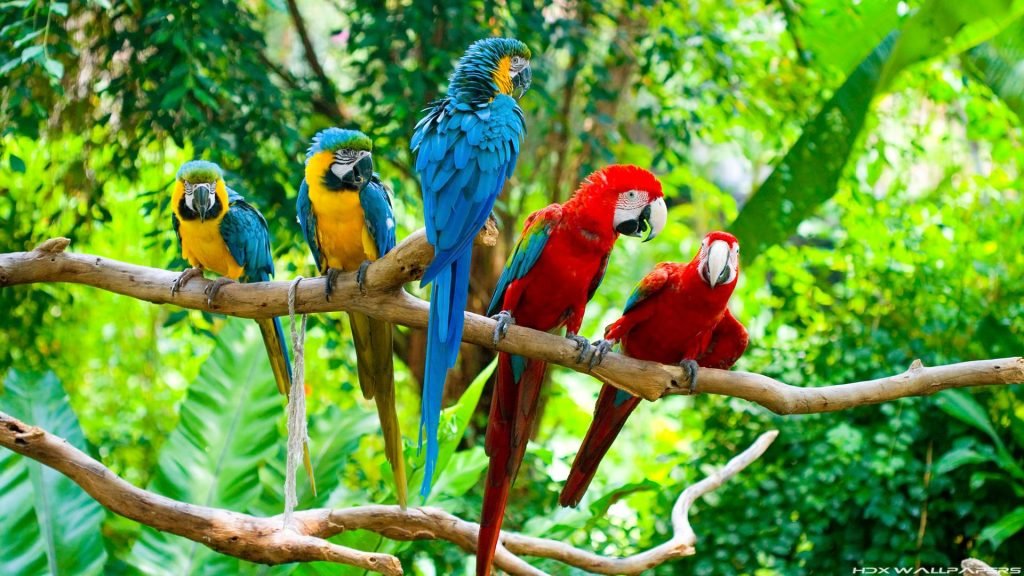
All About Macaw
Description about Macaw
Macaws, the biggest of the parrot world (Psittacidae), accompany alluring hues and imitating capacities significantly increased with cordial miens as a rule, making them great pets or partner fowls. In any case, because of this, huge numbers of these have gotten imperiled, with the Spix’s macaw conceivably having gotten wiped out in nature. The glaucous macaw has likewise most likely been headed to annihilation, as there were just two affirmed sightings in the entire of the 20th century. The biggest individual from the macaw family is the hyacinth macaw, while the littlest is the Hahn’s macaw, being comparative in size to certain parakeets.
Macaws are handily restrained, and some can mirror sounds. Despite the fact that these parrots frequently screech loudly, bite, and once in a while chomp with their ground-breaking bills, numerous nearby individuals keep them as pets. A couple of macaws have made due to 65 years of age in captivity. There are extensive contrasts between the size and characters of macaw species. It is essential to examine species fit to your experience, area and whether you need a pet or rearing macaw.
Interesting Facts About the Macaw
Macaws are exceptionally smart creatures that continually research their condition, frequently with their tongues. They are additionally a profoundly social creature. These qualities make for some intriguing realities about macaws.
Self-Medication – Some macaws accumulate in huge numbers at mud licks which they eat; it is accepted this helps their assimilation.
Mimicry – Macaws can imitate the human voice (yet are bad talkers) and different commotions in their environmental factors.
Monogamy – Macaws are one of only a handful not many creatures known to have a similar reproducing accomplice for their whole lives – the pair regularly share their food with each other to fortify the bond.
Tongue – The tongue is utilized to investigate questions in nature, and to remove food things. To help with this, the tongue contains a progression of bones. The hyacinth macaw has a dark tongue with splendid yellow stripes.
Habitat of the Macaw
One of the extraordinary normal sights in Mexico and Central and South America is an enormous herd of brilliant macaws blasting up from the timberland shade in flight. Macaws live two by two, family gatherings, or groups of 10 to 30, which helps give them insurance from predators like enormous snakes and flying creatures of prey. They generally wake before sunrise, trimming their plumes and calling to each other, maybe imparting where they are and what they intend to do straightaway. At that point, as a gathering, they fly up out of the trees to travel to the day’s taking care of grounds, frequently voyaging a significant distance to a woods of trees with ready natural product. They feast until late morning, when they settle down for all the more trimming and “talking,” at that point scavenge more toward the evening.
Right away previously or after nightfall, macaws all take wing again to come back to their perching site, where they call to one another to make sense of who sits where. The guest plan can change from everyday! Some of the time quarrels break out, yet macaws once in a while genuinely harm one another. When everybody is settled, they calm down, cushion out their quills, and plan to nap as the night progressed.
Care & Feeding Of Macaw
A macaw needs a pen sufficiently tall to forestall its tail quills from arriving in a desperate predicament, which can cause the tail plumes to curve or break. By and large, a macaw needs an a lot bigger confine and play remain than other parrot species, so a potential proprietor should consider space contemplations.
In their normal living space, macaws feed on local seeds, natural products, blossoms, leaves, palm nuts, figs, nectar, and, in certain areas, mud from uncovered stream banks. The dietary needs of some macaw species contrast from that of different parrots since they need increasingly fat in their eating regimen. The wild macaw’s eating regimen will in general be high in fat, which is adequate for a fledgling that goes through its day flying through the rainforest, discovering food, settling, and raising chicks.
Friend macaws will in general have an a lot simpler life than their wild partners, yet they pass up the capacity to rummage for their food, a conduct that falls into place without any issues. Lafeber’s winged creature nourishments are perfect for the enthusiastic macaw, a feathered creature that acknowledges the chance to destroy its suppers. The berry and cake states of these nourishments welcome more association. Macaws will in general love Pellet-Berries, Avi-Cakes, and Nutri-Berries.
Breeding of Macaw
If you want to breed your macaws, make sure they are mature and healthy. Breeding birds need to bond and get use to their surroundings. The birds must be well fed and their new spacious cage must be clean.
Most macaws are bred regularly in captivity. Breeding season is usually in spring and early summer, although some pairs will breed almost year round. Clutch size is usually two to four eggs but sometimes more. Incubation period ranges from 23 to 27 days. Some additional high fat seeds, like sunflower seed, should be added to the diet during the breeding season to stimulate reproduction. Inexperienced hand feeders should allow the parents to feed for the first few weeks.
Nest Box: Large horizontal wooden boxes (approximately 24 inches by 24 inches by 36 inches or 48 inches) are well accepted by large macaws while some will breed well in a vertical wooden box (approximately 12 inches by 12 inches by 36 inches). Macaws should be provided with plentiful chewing material. Pine shavings make excellent nest box bedding.
Care of Chicks: You will need to check the nesting box every day to make sure the chicks are being fed properly. Offer fresh food and plenty of water daily. If the parents care for their young, you will not have to worry too much. However, first time or inexperienced parents may not care for their young, and you have to care for them.
Hand-rearing chicks takes time and the right equipment. You may need to place them in an incubator and hand feed them every 2 hours (commercial diets are available, to which you just add water). The feeding technique is not difficult to learn, but you should have your avian veterinarian show you how to do it properly. This is a critical period in the life of the new birds and it is during this time you may encounter a high rate of complications and mortality.
Soon the new chicks will slowly start to pick at smaller (cracked) seeds you offer. Once you are sure they can eat by themselves, it is time to separate the chicks, some sooner than others, from the parents and start the taming the process.
TYPES OF MACAWS

